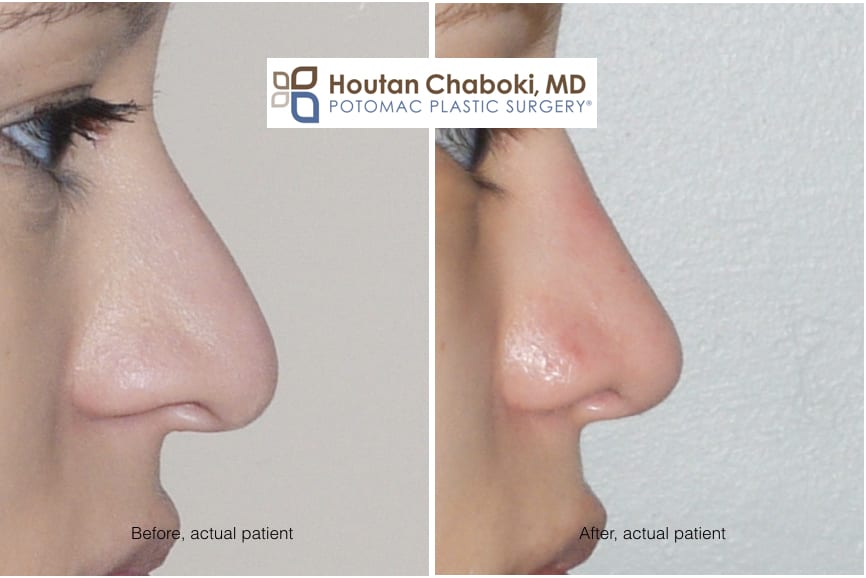
Patient 1: Before and after closed rhinoplasty with profile improvement, tip elevation, cartilage grafts, nostril narrowing, and bone reshaping.
The two methods for surgical rhinoplasty are closed (endonasal) and open (external). Every patient wants to know what is the best plastic surgery method for the nose. However, ask any plastic surgeon and they will tell you there isn’t necessarily a “best”. Each method has its pros and cons, with proponents on each side.
Closed or Endonasal Rhinoplasty
Closed rhinoplasty, also known as endonasal, involves incisions confined to the inside of your nose. External sutures are not required to reshape the nose with this method. Many parts of the nose may be modified with this approach, including the tip and hump. A droopy tip may be elevated and the profile can be improved with closed rhinoplasty. Cartilage grafts may be utilized and bone reshaping can be performed via this method.
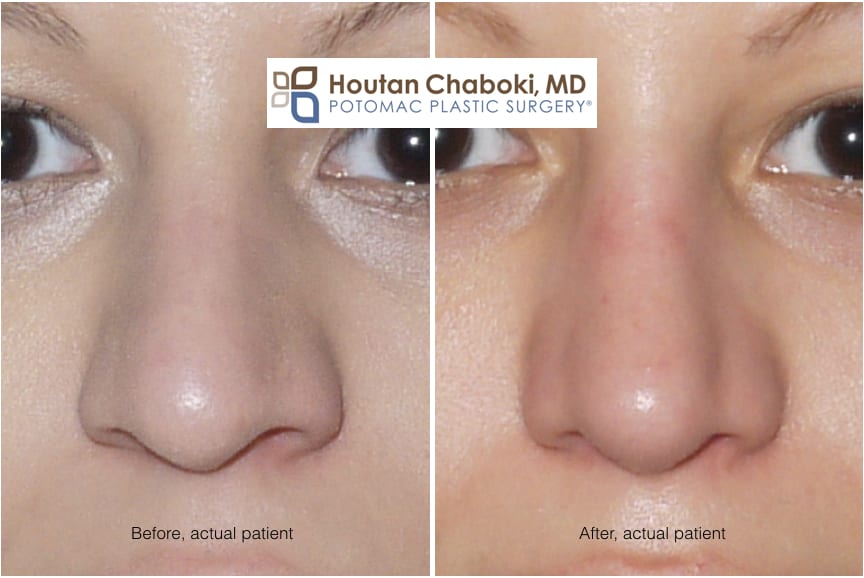
Patient 1: Before and after closed rhinoplasty with profile improvement, tip elevation, cartilage grafts, nostril narrowing, and bone reshaping.
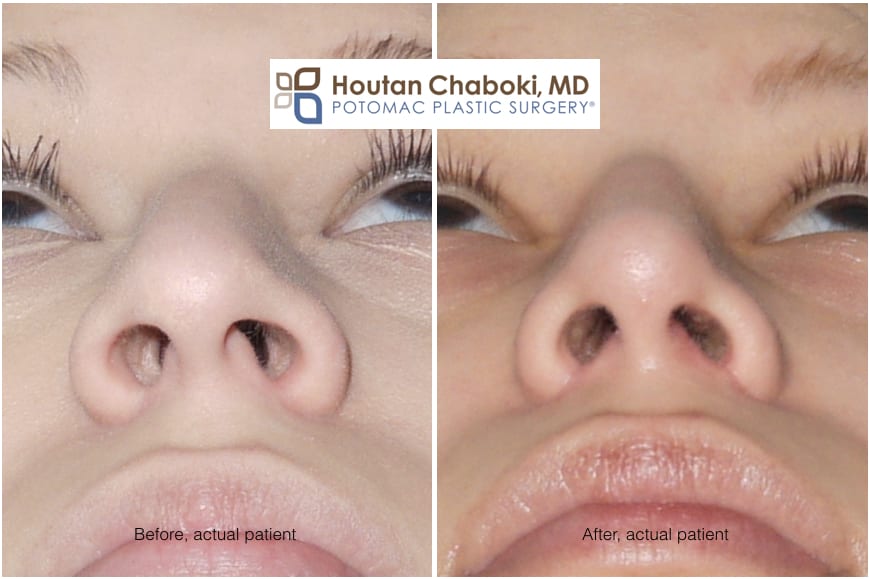
Patient 1: Before and after closed rhinoplasty with profile improvement, tip elevation, cartilage grafts, nostril narrowing, and bone reshaping.
In addition to avoiding an external incision and scar, another potential benefit is that swelling resolves earlier and recovery is generally faster with closed rhinoplasty. The closed procedure is considered less invasive and usually takes surgeons less time to perform.
The disadvantage is that for some patients potential changes may be limited due to the reduced dissection and direct visualization. It’s technically a more challenging method for some plastic surgeons. It is also considered a harder approach to teach and learn by plastic surgeons.
Open or External Rhinoplasty
Open rhinoplasty involves a small incision across the base of the nose, between the nostrils. Additional incisions are also made on the inside of your nose to lift the skin off the nasal cartilage and bone.
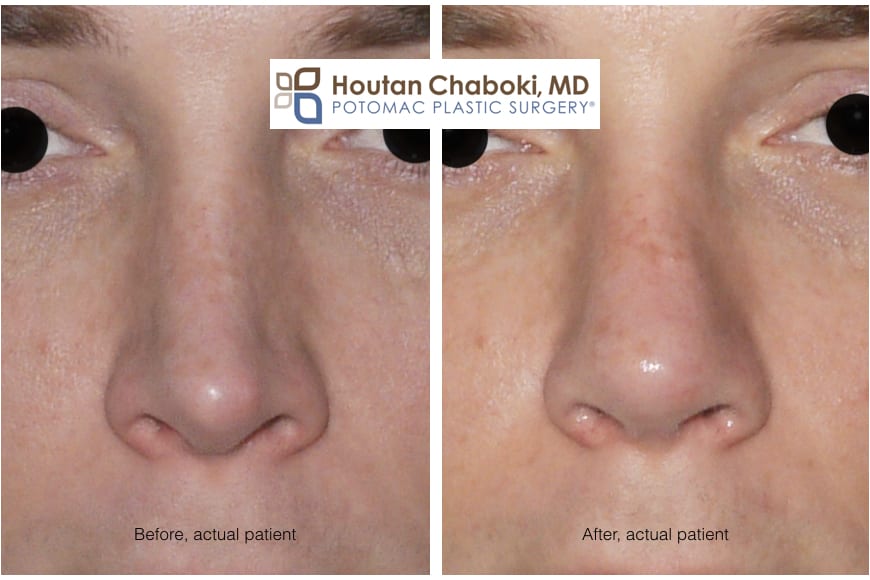
Patient 2: Before and after revision open rhinoplasty with profile improvement, tip modification, cartilage grafts, and nostril narrowing. Open rhinoplasty scar between the nostrils is well healed.
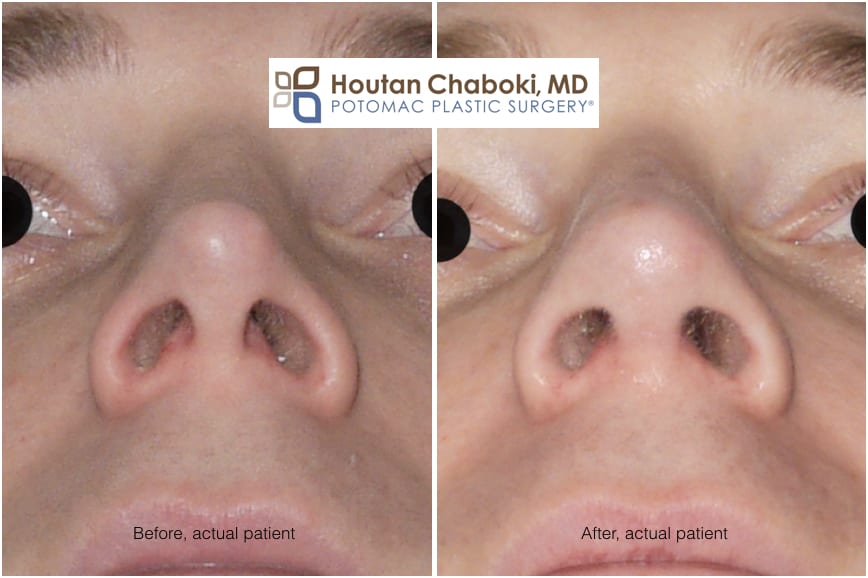
Patient 2: Before and after revision open rhinoplasty with profile improvement, tip modification, cartilage grafts, and nostril narrowing. Open rhinoplasty scar between the nostrils is well healed.
Similar to closed rhinoplasty, open rhinoplasty can be performed in a variety of nasal surgery. Open rhinoplasty surgery is more commonly preferred by surgeons in more complicated rhinoplasty surgeries. Some plastic surgeons simply prefer the open rhinoplasty approach because it allows greater direct visibility of the nose. In addition to the disadvantage of an external scar, swelling and bruising usually last much longer with this rhinoplasty approach.
Some specific rhinoplasty modifications, such as nostril narrowing, can only be performed with incisions on the outside. With nostril narrowing, excess nostril skin is removed so external incisions cannot be avoided. Fortunately, any potential scars are hidden as the skin heals well in this area.
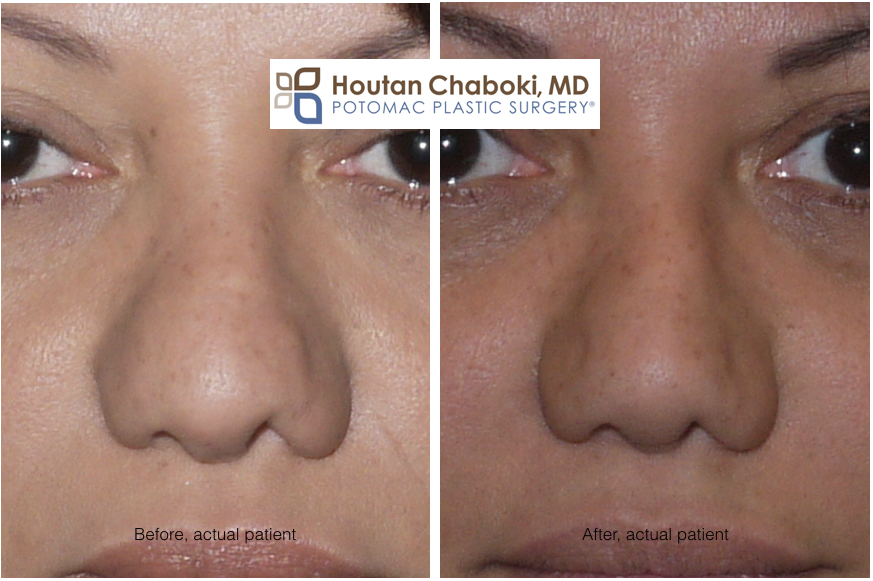
Patient 3: Before and after revision endonasal (closed) rhinoplasty with profile improvement, tip modification, cartilage grafts, and nostril narrowing. Rhinoplasty scar on the sides of nostrils are well healed.
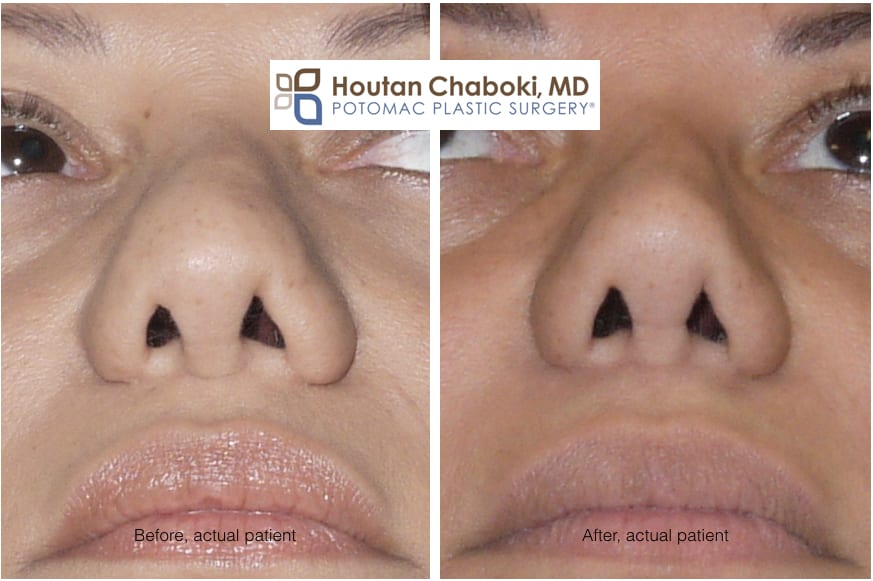
Patient 3: Before and after revision endonasal (closed) rhinoplasty with profile improvement, tip modification, cartilage grafts, and nostril narrowing. Rhinoplasty scar on the sides of nostrils are well healed.
Which Rhinoplasty Method is Best?
Each rhinoplasty surgeon will have their personal preference, as the chosen rhinoplasty method is largely based on the plastic surgeon’s prior training and expertise. When deciding on open vs. closed rhinoplasty, one should follow the advice of your plastic surgeon and your specific rhinoplasty needs. Primary rhinoplasty (in patients without prior surgery or trauma) is more likely to be performed closed, while complex revision rhinoplasty with multiple cartilage grafts may more likely be performed open. The best rhinoplasty surgeons will tailor the rhinoplasty to the needs of each individual patient.
We perform all types of nasal surgery: open / closed, primary / revision, etc. Our preference has always been endonasal rhinoplasty, as postoperative recovery is easier as compared to the open approach. We often perform revision rhinoplasty via a closed approach too, even in complicated cases. We discuss the options with patients, and based on their specific rhinoplasty desires, help develop a treatment that is appropriate for them. A surgical plan is developed with patients using computer simulation.
Lastly, for patients who aren’t ready for either closed or open rhinoplasty, then nonsurgical rhinoplasty may be considered.
Have your considered open or closed rhinoplasty? Share your questions below.

Leave a Reply